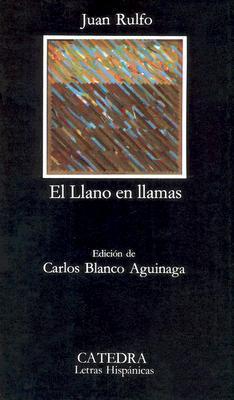What do you think?
Rate this book


176 pages, Paperback
First published September 18, 1953
And on that hot griddle they want us to plant the seeds of something, to see if something will take root and grow. But nothing will grow here. Not even buzzards. You spot them every so often, very high, flying fast; trying to get out as soon as possible from this white hardened soil, where nothing moves and where you walk as if you are losing ground.
“I shouldn’t have killed all of them; I should have been satisfied with the one I needed to kill; but it was dark and the shapes all looked the same… In the end, it will be cheaper for them to be buried in group.”
It all looked very beautiful to see the fire marching along the pastures, to see almost the entire Plain turned into a burning coal in that combustion, with the smoke undulating up above; that smoke smelling like cane and honey, because the fire had also reached the cane fields.
Old women, daughters of evil! I saw them coming all together, in a procession. Dressed in black, sweating like mules under the sheer rays of the sun. I saw them from far off, raising dust as if they were a mule train. Their faces made ashen by dust. Black, all of them.
El Llano or El Llano Grande is the name of the arid, treeless, shrubless, birdless flatland in Jalisco, Mexico, where the stories are set. It’s shown in the relief map on the cover of this translation.Ivan Stavans' perspective is at these interviews: https://biblioklept.org/2013/05/16/yo... and https://biblioklept.org/2014/01/22/la.... And his choice of title:
In El Llano we have a proper noun, a toponym, a place name that describes the land. And as a general noun, a llano is a dry plain of sometimes great extension, a feature of the northern parts of south America and the south-western US. Like veldt or steppe or glen or bayou, a llano is a geographical particularity and to transpose the particular into the generic would be to traduce it. And finally, typographically, that initial ‘Ll’ digraph holds your eye nicely; it snags in the mind in just the right way.
The title in Spanish has the alliteration – El Llano en Llamas. Llano. Llamas. In English, the first translation was The Burning Plain, which is so dull, so plain, so uninteresting. I immediately said I’ll do it, but it has to be The Plain in Flames, which plays with the alliteration. The Juan Rulfo Foundation said “we love it.” The publisher said “we can’t do it” – because people have already connected The Burning Plain with Rulfo, and if you change the title, you can lose readers. And I said I’m not doing that. If we don’t have “The Plain in Flames,” I won’t do it. And finally we were able to convince them. So they resisted for marketing reasons. That’s something that translators often have to deal with.This collection is perhaps less formally inventive than the hallucinatory Pedro Páramo, but is important for giving direct voice to the inhabitants of the llano, its acute psychological realism and the brilliant economy of the writing. The opening story here, 'They gave us The land' / 'Nos han dado la tierra' is one of a number that focus on the disappointing reality of life in post-revolutionary Mexico. The narrator is one of a dwindling group of men travel over the arid llano to the barren territory they've been assigned as part of land reform. As they struggle in the heat, a dark cloud passes overhead, giving them hope, but only a solitary raindrop falls.
Cai uma gota de água, grande, gorda, fazendo um buraco na terra e deixando um empaste como de uma cuspidela. Cai sozinha. Nós esperamos que continuem a cair mais. Não chove. Agora se olharmos para o céu, vê-se a nuvem aguaceira correndo para bem longe, cheia de pressa. O vento que vem da aldeia arrima-se-lhe empurrando-a contra as sombras azuis dos cerros. E a gota caída por engano é comida pela terra que a faz desaparecer na sua sede.
(p.10 )
San Juan de Luvina. Aquele nome soava-me a nome de Céu. Mas aquilo é o Purgatório. Um lugar moribundo onde até os cães morreram e já não há quem ladre ao silêncio; pois assim que uma pessoa se acostuma ao vendaval que ali sopra, não se ouve senão o silêncio que há em todas as solidões.
(p.95)
From whatever angle you look at it, Luvina is an awful sorry place. You being headed there, you’ll soon realise. I would say its where sorrow makes her nest. Never a smile to be seen, and everyone goes around with a face on them like it got set in a cast. And, should you want, you can see that sorrow any time you please. The wind blowing there gets it stirred up, yet never sweeps it away. It lingers there like it was born there. And you get to know it by taste and by feel, from the way it bears down on you constantly, clutching you tight, like a terrible poultice crushed into the heart’s vital flesh